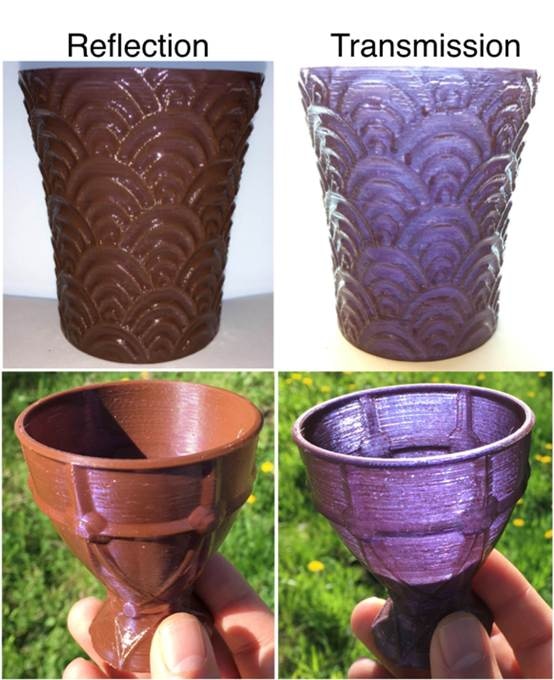Feb 15 2019
From the time of the Roman Empire, the use of metallic nanoparticles as glass colorant is well known. The Lycurgus cup is one of the familiar pieces of pottery from the Roman Empire.
 The same 3D-printed dichroic nanomaterial shows different colors and opacities when the light is from the same side of the observer (reflection) or on the opposite side (transmission). (Image credit: Wageningen University & Research)
The same 3D-printed dichroic nanomaterial shows different colors and opacities when the light is from the same side of the observer (reflection) or on the opposite side (transmission). (Image credit: Wageningen University & Research)
Due to their optical peculiarity, the nanoparticles ingrained in this cup exhibit different colors based on the angle of illumination. This effect is known as dichroism. Currently, researchers at Wageningen University & Research have 3D-printed objects that exhibited dichroic effect.
The production of unique kinds of gold nanoparticles having different sizes made this 21st-century invention possible. Then, the nanoparticles were embedded into a common 3D printing material (PVA), which can be bought from any shop, and 3D-printed using a conventional, off-the-shelf 3D printer.
A Bit of Gold
The gold content in the material is very less, only about 0.07 wt%. The material’s printability is not affected by such a trivial amount of gold and remains the same as that of the normal material. Although the amount of gold is very low, the nanocomposite material exhibits a unique dichroic effect displaying a violet transparent color in transmission (when the illumination and the observer are on the opposite sides) and a brown opaque color in reflection (when the observer and the illumination are on the same side).
New Class of 3D-Printable Nanomaterials
The material employed in this new study is a conventional material that can be printed using any off-the-shelf 3D printer; it also paves the way for a new family of 3D-printable nanomaterials in which the inherent properties of the nano realm, in this case optical properties, are retained even in the 3D-printed object. Unique optical properties such as these can be used not just by artists for their colors, but also for nanocomposite-based filters and lenses in the future.
Currently, the researchers are working toward optimizing this methodology using different materials and different nanoparticles.